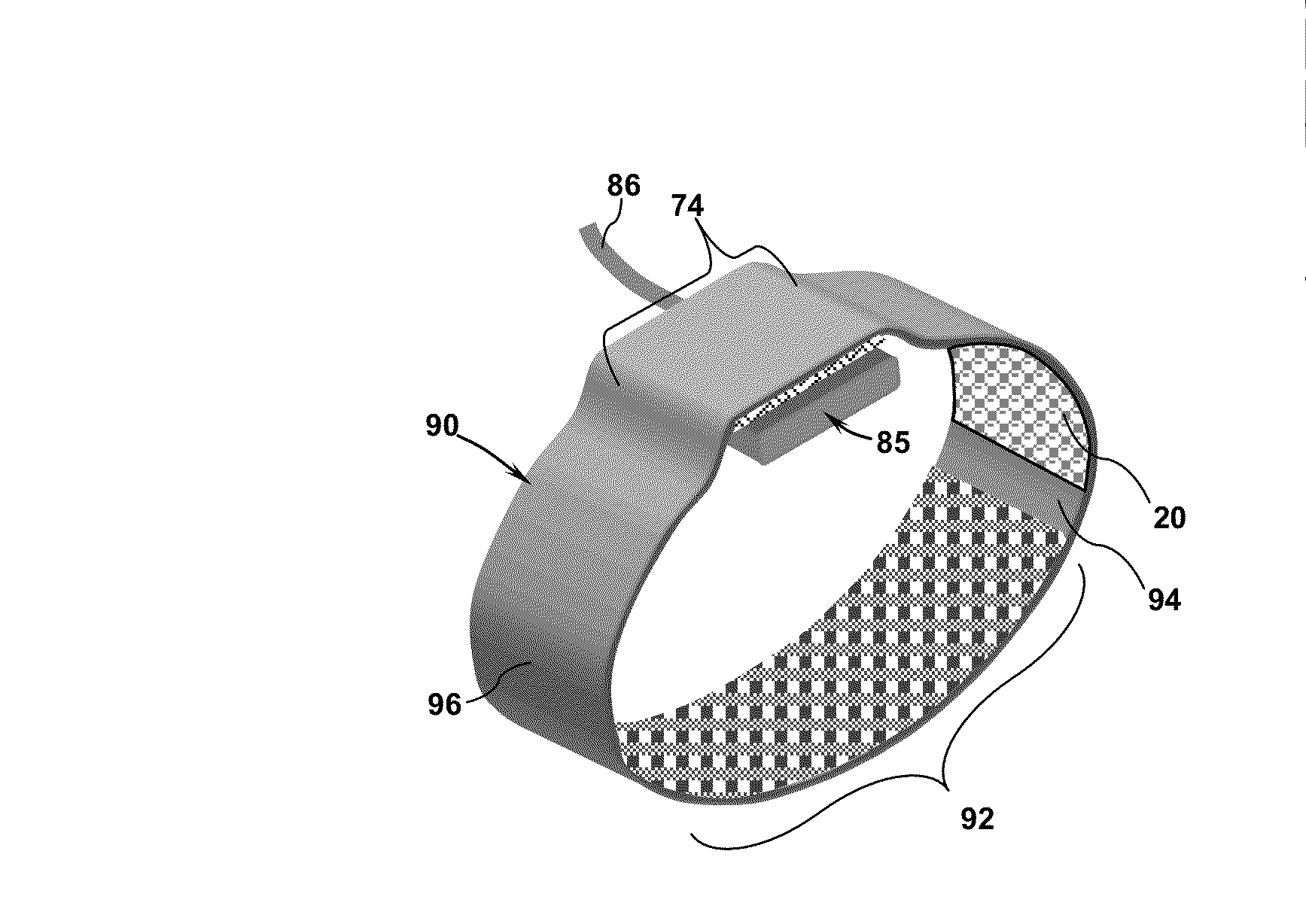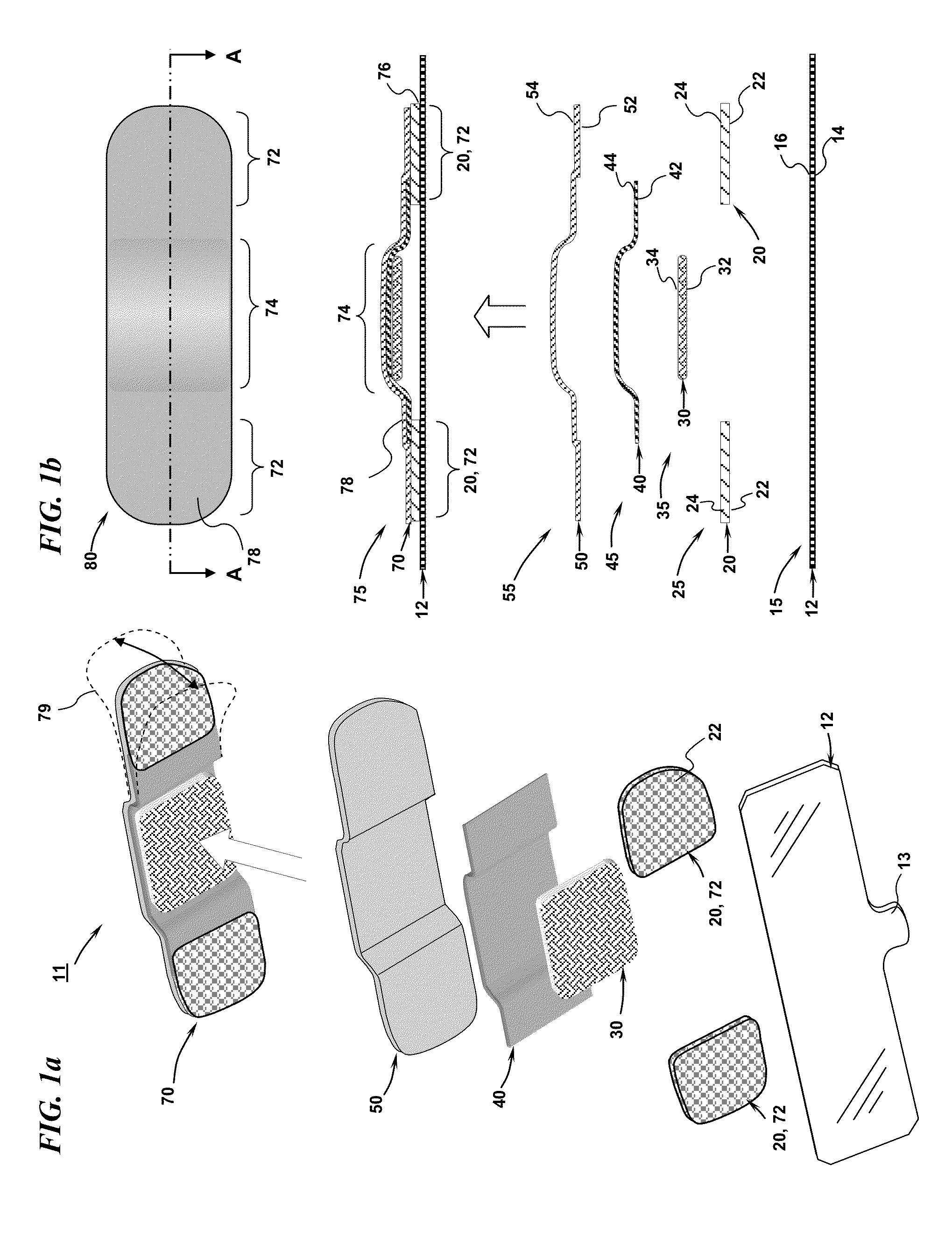Disposable protective overlay covering for biomedical sensors
a biomedical sensor and protective layer technology, applied in the field of sensors, can solve the problems of contaminating the detected semg signal, limiting the widespread utilization of semg technology outside the laboratory environment, and retaining the limited functionality of the sensor in demanding applications, so as to reduce the potential for sensor dislocation and stabilize the relative position of the sensor
- Summary
- Abstract
- Description
- Claims
- Application Information
AI Technical Summary
Benefits of technology
Problems solved by technology
Method used
Image
Examples
embodiment 111
[0064]Another biomedical sensor embodiment 111 includes an electrostatic shield contact pad substrate layer 120, a cushioning substrate layer 130, an insulating substrate layer 140, and an electrostatic shield substrate layer 150, disposed on a release liner 112 as illustrated in the exploded view of FIG. 3a. The assembled components of the sensor overlay covering 111 are in the form of a flexible, elongated strip 170, with a receptacle region shaped and contoured to retain a wireless biomedical sEMG sensor and conductive adhesive regions securing the sensor to the skin. The enclosed geometry of the sensor retaining region 174 of the sensor overlay covering 111 is in the form of a contoured pocket 177 designed to be compatible with wireless sensor technologies, and provide a means to dissipate the accumulation of electrostatic charges on the covering's outer surface 178 into the body, and shield the underlying sensor from externally generated low frequency electrical fields such as ...
embodiment 211
[0080]The patch configuration 270 of the sensor overlay covering embodiment 211 is suitable for securing the sensor at locations which are not amenable to an encircling band, such as the torso and large limb muscles, or for applications where multiple, closely spaced, adjacent sensors are required. The skin 284 application of the patch configuration 270, of sensor overlay covering 211 used the example illustrated in FIG. 5a, is detailed as follows: Initially, the body-directed surface 288 of the sensor 285 containing the electrode contacts 287 is applied to the surface of the skin 284. Prior to use, the release liner 212 of overlay configuration 270 is removed and the retaining region 274 of overlay covering 270 is positioned and pressed into place over the sensor 285. Next, the outer surface 278 of the overlay 270 is pressed to the skin 284, securing the sensor 285 and overlay covering configuration 270.
PUM
 Login to View More
Login to View More Abstract
Description
Claims
Application Information
 Login to View More
Login to View More - R&D
- Intellectual Property
- Life Sciences
- Materials
- Tech Scout
- Unparalleled Data Quality
- Higher Quality Content
- 60% Fewer Hallucinations
Browse by: Latest US Patents, China's latest patents, Technical Efficacy Thesaurus, Application Domain, Technology Topic, Popular Technical Reports.
© 2025 PatSnap. All rights reserved.Legal|Privacy policy|Modern Slavery Act Transparency Statement|Sitemap|About US| Contact US: help@patsnap.com



